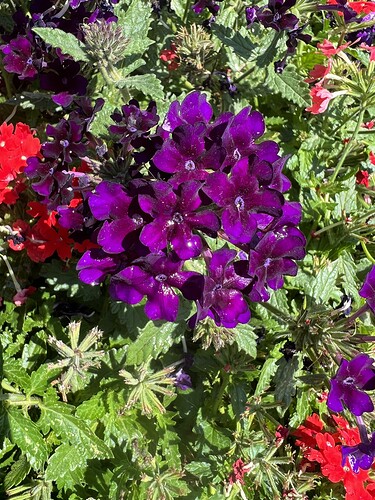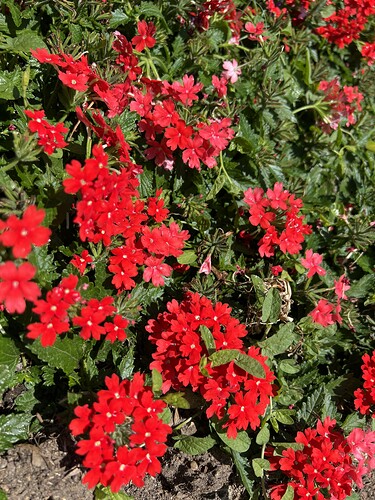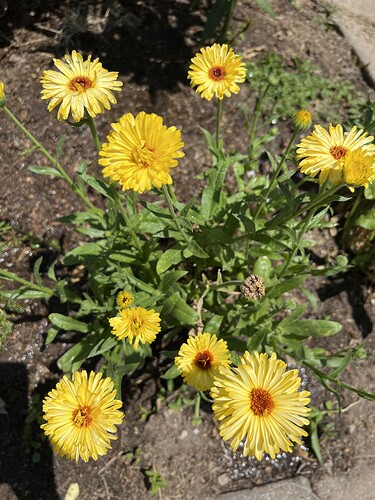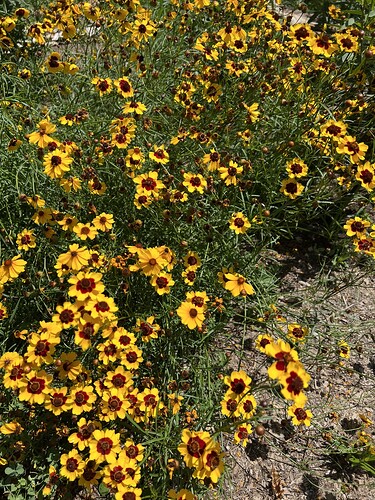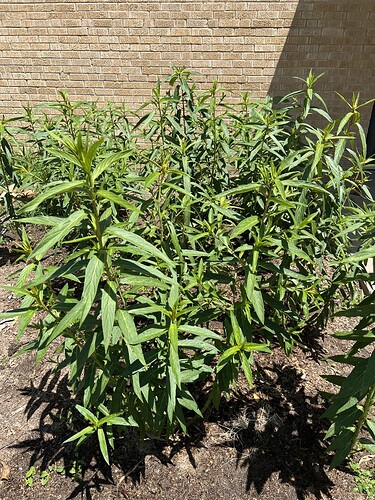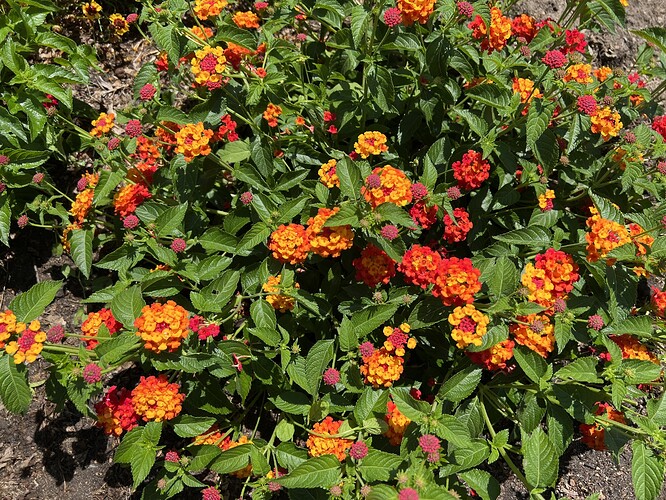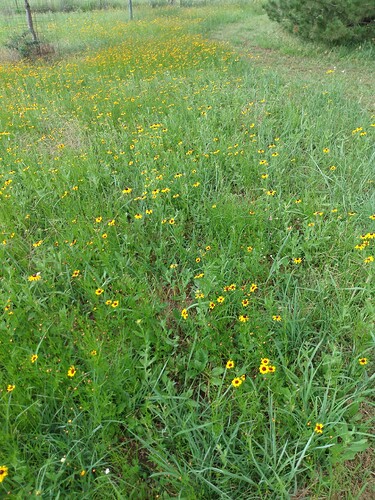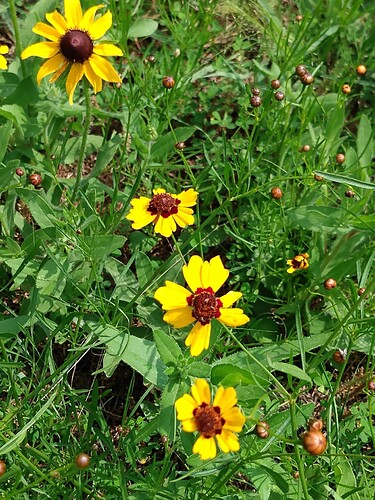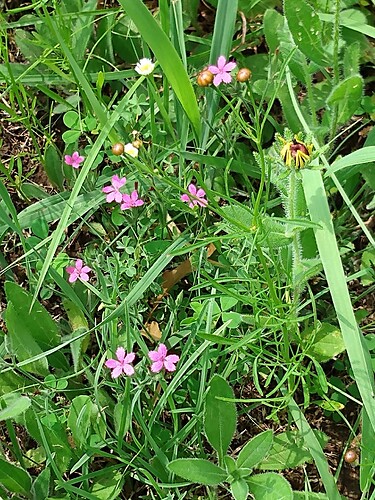Verbena
Verbena
Calendula (field marigold) - also a medicinal plant for skin ailments, used in balms and ointments
Do any of these plants tolerate full west-facing sun?
Those plants are all located on the south end of the south wing, the only shade being early AM - there is direct sun all through the hot afternoon and evening. They thrive in the sun! The same type of coreopsis was even blooming wild in Chapin Park last summer in the extreme drought where the park had no supplemental water. The lantana is actually native further south (TX-Mexico) in hotter full sun conditions where it’s a perennial, unlike the annual it is here.
It’s actually harder to find pollinator plants which prefer shade. Some are tolerant of partial shade but most require at least 6 hours of full sun.
Thank you!! Our house faces west and we have been wanting to find pollinator plants that we can put out front.
We had lantana in our yard in Oklahoma that was perennial. I think my great grandmother or grandfather planted it.
@Emme the Threadleaf Coreopsis should do really well on the west side. I have a ton of wild ones growing in my yard and pasture, as well as Black Eye Susans, and other wild flowers. I never planted any of them. Apparently they were wild and already there. I have never watered any of them and they have all day, or all afternoon/evening exposure. They either do well with the rain available or they go dormant. So with a little supplemental watering when it gets really dry, they should do very well for you.
Yarrow was featured in the NGA News Letter for Pollinator Gardens
John
[Yarrow (Achillea ptarmica ]
(upload://oKF9QKwVcjy4x9kk8ULaVONrtF4.png)
(https://garden.org/plants/view/236282/Yarrow-Achillea-ptarmica-The-Pearl-Superior/?utm_source=nl&utm_medium=mail&utm_campaign=nl_2023-06-17)
Plant Habit: Herb/Forb
Life cycle: Perennial
Sun Requirements: Full Sun, Full Sun to Partial Shade
Water Preferences: Mesic, Dry Mesic
Minimum cold hardiness: Zone 3 -40 °C (-40 °F) to -37.2 °C (-35)
Leaves: Fragrant
Flowers: Showy
Flower Time: Late spring or early summer, Summer, Late summer or early fall
Uses: Medicinal Herb, Cut Flower, Dried Flower, Will Naturalize
Dynamic Accumulator: K (Potassium), P (Phosphorus), Fe (Iron)
Wildlife Attractant: Butterflies, Bees
Resistances: Deer Resistant, Rabbit Resistant, Salt to lerant, Drought tolerant
Pollinators: Self, Bees, Flies
Containers: Suitable in 3 gallon or larger, Needs excellent drainage in pots
I planted yarrow once last year but it was buried. I have considered planting it in the pollinator garden but I never see the pollinators exploring any of the mounds of it I have growing at home, which leaves me confused. It is well suited to the low-maintenance needs our landscaping requires and is very drought friendly, it’s foliage is a lovely silver-gray and the flowers are prolific IME.
I’ve heard it can be invasive but in over 6 years mine has not spread more than a couple of feet in any direction. One mound has gotten large enough I should divide it.
I’m not sure about the cultivated varieties they sell at garden centers, but the wild type growing all over my place is nice looking and I do see various pollinators on it. It seems that it may be a last resort if there are other types of flowers blooming but it is used by them sometimes.
Also, if I get a minor cut or scrape, I find a yarrow leaf or two, or a pinch of the flowers and crush them between my thumb and finger and put it on the cut to stop bleeding. It works faster than anything I’ve ever used. I’m not sure the cultivated type works for this, but the wild type works great.
